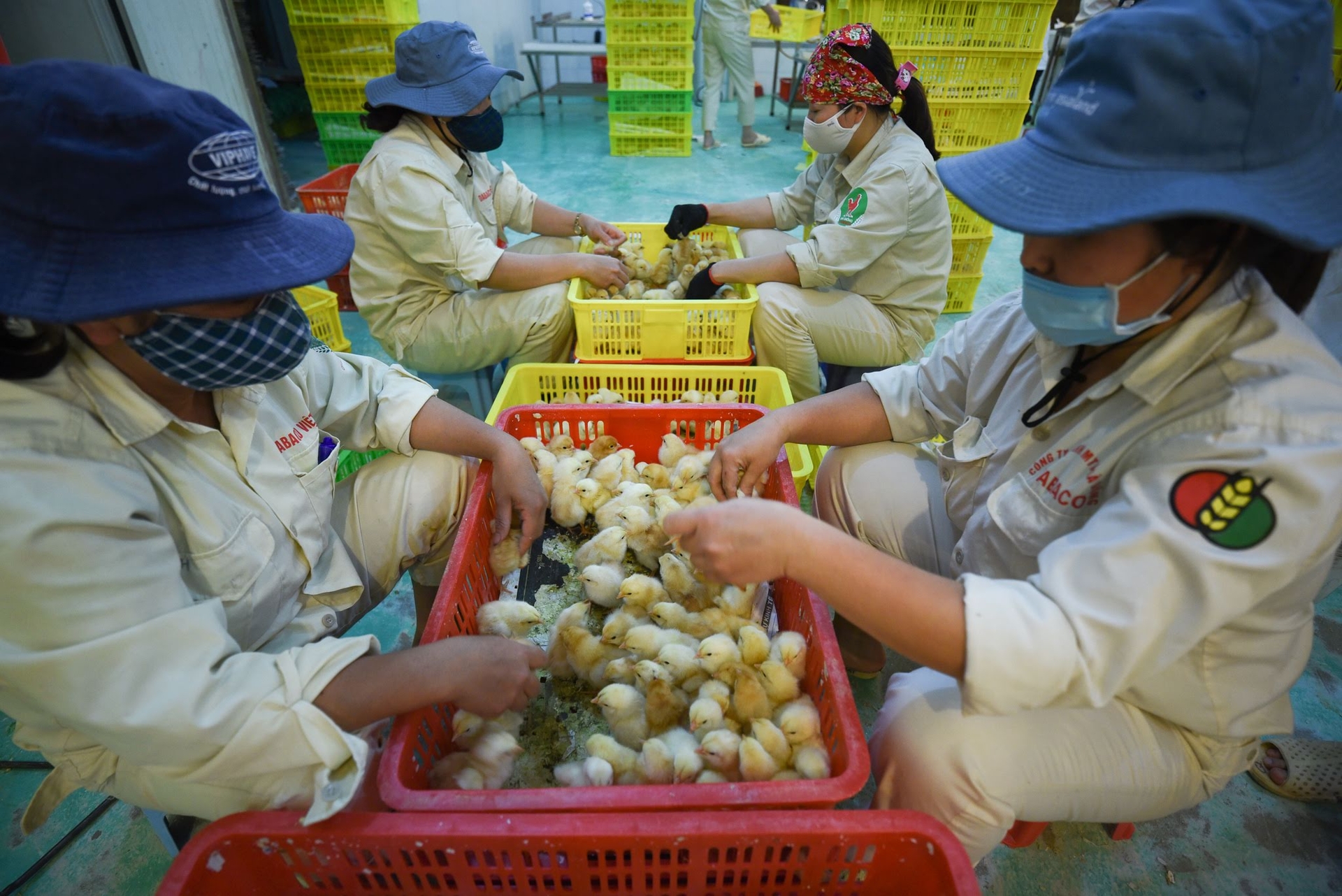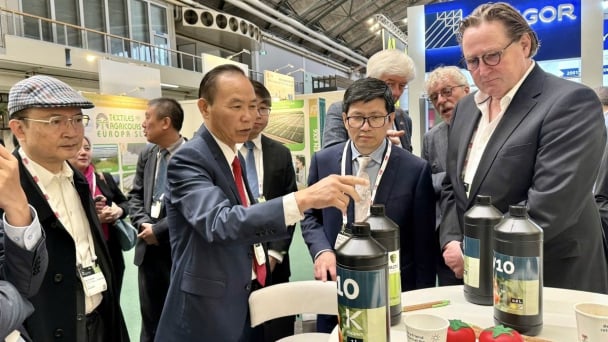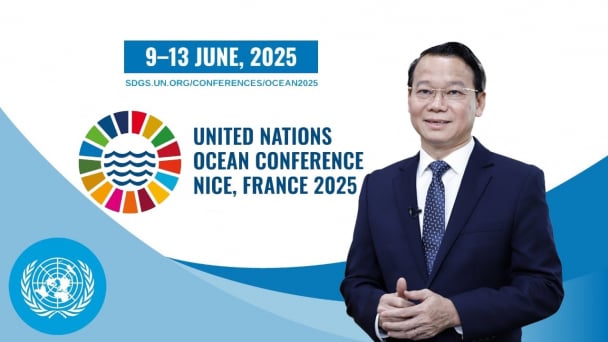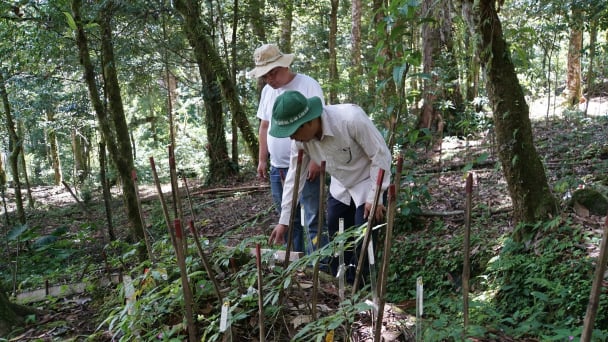June 12, 2025 | 05:15 GMT +7
June 12, 2025 | 05:15 GMT +7
Hotline: 0913.378.918
June 12, 2025 | 05:15 GMT +7
Hotline: 0913.378.918

The plan was approved to strengthen the capacity to manage and control animal diseases and ensure food safety of animal origin for the 2023 - 2030 period. Photo: Tung Dinh.
Deputy Prime Minister Tran Luu Quang has just signed Decision No. 889/QD-TTg dated July 25, 2023, approving the "National Plan to deploy key tasks to strengthen epidemics management and control capacity of animal diseases and ensuring food safety of animal origin, from 2023 to 2030" (hereinafter abbreviated as the Plan).
Accordingly, the Plan aims to build disease-free facilities and areas for livestock and poultry to serve domestic consumption and export.
Ensure veterinary hygiene and food safety in animal husbandry, transportation, slaughter, preliminary processing, processing, and trading of animals and animal products; import aquatic animals and animal products.
Specific goals on strengthening capacity for managing and controlling animal diseases transmitted between animals and humans from 2023 to 2030.
Six regions of Binh Phuoc province, one region of Tay Ninh province, and 12 other regions in Binh Duong, Dong Nai, Tay Ninh, and Ho Chi Minh City have achieved epidemic safety following Vietnam's regulations.
Four regions of Binh Phuoc province and one region of Tay Ninh province achieved epidemic safety according to the World Organization for Animal Health (WOAH) standards. By 2030, areas that have achieved disease safety will remain maintained.
The remaining districts of Binh Phuoc, Binh Duong, Dong Nai, Tay Ninh, Ho Chi Minh City, and other provinces in the Southeast region and the Central Highlands can develop disease safety according to Vietnam's regulations.
There are eight other regions of Binh Duong province, Dong Nai province, and Tay Ninh province built according to WOAH standards.
Regarding the export of animals and animal products, the plan aims to export processed chicken to the markets of Japan, Hong Kong, and the 5 Eurasian Economic Union countries and Korea, Singapore, the UK, the EU, and China.
Exported eggs and poultry products to Hong Kong, Singapore, Japan, Taiwan, Australia, the United States, Korea, Taiwan, and Hong Kong markets.
Export of pork to Malaysia, China. Exported milk and dairy products to Malaysia and Indonesia. Exported honey and bee products to Japan, Thailand, and other markets.
Specific targets on strengthening capacity for animal management, quarantine, slaughter control, veterinary hygiene, and food safety inspection for animals and animal products in the period of 2023 - 2030 are 100 % of quarantine stations at traffic hubs are reviewed and reported to competent authorities for investment and upgrading to ensure compliance with the provisions of law.
100% of animals brought into centralized slaughterhouses are slaughtered by veterinary authorities.
Specific goals on improving capacity for management, research, production, testing, and testing of veterinary drugs and vaccines to ensure quality, safety, and effectiveness from 2023 to 2030.
Striving to have at least two critical laboratories under the Ministry of Agriculture and Rural Development built to inspect and assess the quality of veterinary drugs and vaccines and one key laboratory for drug resistance.

The Plan aims to export many livestock products to high-end markets. Photo: Tung Dinh.
The Plan also clearly outlines the critical solution tasks for implementation to achieve the set objectives.
Accordingly, the group of critical tasks and solutions to strengthen the capacity to manage and control animal diseases and diseases transmitted between animals and humans from 2023 to 2030.
Identify and establish a disease-free area following the provincial planning and organize the implementation by the provisions of the Law on Animal Health, the Law on Planning, and the regulations of WOAH.
Direct, guide, and manage livestock production to ensure disease safety. Organize monitoring implementation, take samples for testing to certify disease and food safety, and build an information and data management system to provide traceability requirements.
Group of tasks and critical solutions to strengthen capacity for animal management, animal quarantine, slaughter control, veterinary hygiene inspection, and food safety for animals and animal products for 2023 - 2030.
That is investing in new construction, upgrading and renovating infrastructure and equipment for border veterinary quarantine agencies.
Direct and guide localities to invest in upgrading animal quarantine stations at traffic hubs to ensure compliance with law provisions. Supervision of veterinary hygiene and food safety for animal products for domestic consumption.
A group of critical tasks and solutions to improve the capacity of management, research, production, testing, and testing of veterinary drugs and vaccines to ensure quality, safety, and effectiveness for 2023 - 2030.
Including building two key laboratories for testing and evaluating the quality of veterinary drugs.
Invest in and upgrade pharmaceutical testing laboratories, veterinary vaccine laboratories, and animal-rearing areas for research, testing, and testing by the Department of Animal Health.
Establish a system of drug resistance testing laboratories, including a national key testing laboratory for drug resistance.
Translated by Ha Phuc

(VAN) The Netherlands is ready to accompany Vietnam in building a green, circular, and sustainable agriculture sector that is resilient to climate change.

(VAN) Minister Do Duc Duy affirmed Vietnam’s 6 strategic goals, prioritizing on conserving ocean ecosystems in tandem with developing a blue marine economy.

(VAN) On June 9, within the framework of the UNOC3, Minister Do Duc Duy met bilaterally with Mr. Murray Watt, the Minister for Environment and Water of Australia.

(VAN) The signing and exchange of a cooperation agreement between the Vietnam Department of Geology and Minerals and its French counterparts were witnessed by Prime Minister Pham Minh Chinh and French Prime Minister Francois Bayrou.

(VAN) With the tireless efforts of Co De Chai Cooperative and more than 1,200 local households, the valuable herbs are being cultivated and cared for each day.

(VAN) The festival aims to promote Ngoc Linh ginseng and the herbal medicine sector as key economic drivers, closely linked with the conservation of natural resources and the cultural identity of the mountainous region.

(VAN) AVAC Vietnam shipped 120,000 doses of the African Swine Fever vaccine to Indonesia on June 9. The vaccine is anticipated to be delivered to importers and distributors after a four-hour flight.